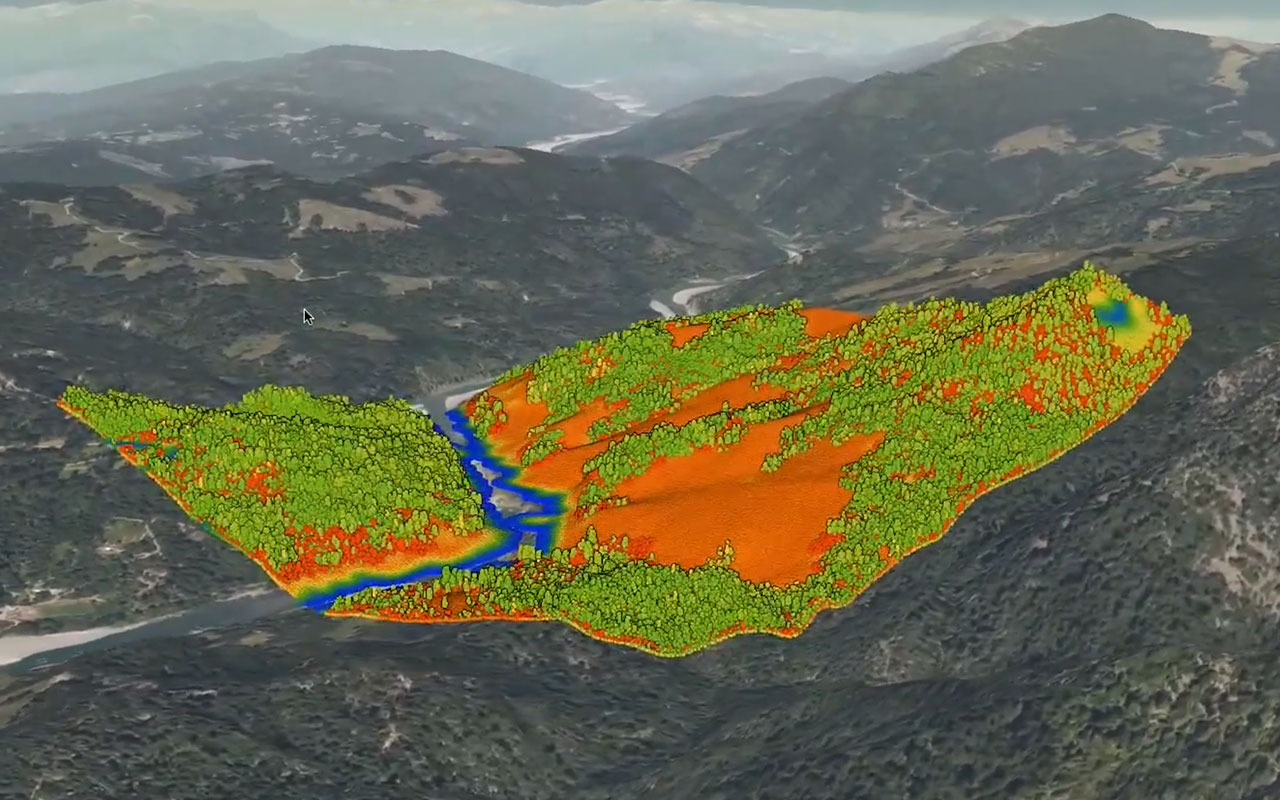San Diego Supercomputer Center Takes a Lead in Fighting Fires Proactively
NSF gives $5M to support UC San Diego-based BurnPro3D, powered by WIFIRE Commons
Published Date
By:
- Cynthia Dillon
Share This:
Article Content
According to scientists, a century of suppressing wildfires has created a dangerous stockpile of flammable vegetation on landscapes. This “fire fuel” has fed the megafires that put human life and property at risk and permanently destroy ecosystems.
To mitigate the threat of these massive blazes, fire managers and responders can set small controllable fires ahead of time to reduce the flammable materials. And a team of researchers – from the San Diego Supercomputer Center (SDSC) located at UC San Diego, the University of Southern California (USC), Los Alamos National Laboratory (LANL) and the Tall Timbers Research Station (TTRS) in Florida, to other government, academic and industry partners, including the US Geological Survey (USGS) and the US Forest Service – has found a way to help.
BurnPro3D is the team’s new decision support platform to help the fire response and mitigation community understand risks and tradeoffs quickly and accurately so that they can more effectively manage wildfires or conduct controlled burns. The National Science Foundation (NSF) has shown its support for this innovative platform that brings science, data and technology together in dynamic fashion with $5 million in funding through its Convergence Accelerator program.
Leveraging the WIFIRE Commons data-sharing and artificial intelligence (AI) framework, the BurnPro3D platform uses next-generation fire science in prescribed burns for preemptive vegetation treatment at an unprecedented scale. Ilkay Altintas, chief data science officer and director of the WIFIRE Lab at SDSC is the project’s principal investigator (PI).

A virtual 3D forest in Humboldt County, CA, generated by FastFuels (Russell A. Parsons, US Forest Service) containing a heterogeneous mix of fuel densities. Credit: WIFIRE Lab
“BurnPro3D harnesses the data and AI capabilities in WIFIRE Commons for optimization of fire mitigation efforts. The NSF convergence accelerator program is all about innovation for societal impact. We have been developing key infrastructure and partnerships in this area for the last eight years, and more recently working with our BurnPro3D collaborators to include next-generation fire science and AI in various aspects of the project. We are looking forward to working with the broader community to maximize the impact of this work,” said Altintas.
To achieve its vision, the BurnPro3D team is developing specific innovations to:
- use technologies to fuse data coming from diverse sources and prepare it for fire modeling,
- integrate physics-based machine learning within next-generation fire models to use deep learning to understand complex processes that drive fire behavior,
- apply constraint optimization methods to address complex tradeoffs in the decision process for the placement and timing of controlled burns and
- employ explainable AI to increase the interpretability of data and models by diverse users all along the decision-making chain.
“USC is thrilled to partner with our strong AI expertise in semantic technologies, optimization and machine learning. Sustainability is a priority for our research, and fire-modeling capabilities are a crucial aspect of planning how to preserve our resources and protect ourselves against climate extremes such as droughts,” said Yolanda Gil, director of New Initiatives in AI and Data Science at USC’s Viterbi School of Engineering.
As the former head of one of the nation’s largest prescribed fire programs, TTRS’ Kevin Hiers has seen firsthand how complex burn planning can be and how it is underserved by fire science initiatives.
“The truth is that more well-planned fire is needed to solve the western wildfire problem, and technology can help us safely plan those good fires. Unfortunately, the gap between the high-tech innovations and fire managers has gotten bigger, which limits applications of new models or AI to solve this problem,” said Hiers. “The BurnPro3D and WIFIRE Commons are designed to bridge that gap. We are excited to work with managers and fire scientists to apply these next generation tools to help safely plan prescribed fires and optimize their placement on the landscape for maximum risk reduction.”
According to Paul Steblein, wildland fire science coordinator for the USGS, this project will help the federal fire science community to explore game-changing innovation information technology.
“The BurnPro3D project will help to rapidly improve new models, planning tools and data fusion at a time when prescribed fire and other fuel treatments will be receiving significant investment to reduce wildfire risks," Steblein said.
LANL’s Rod Linn, the WIFIRE team member who led the development of the modeling tools behind BurnPro3D explained, “The aim of this project is to empower researchers and fires managers to plan fuel treatments and prescribed burns by accessing to next-generation modeling tools which are enabled by AI, data fusion and the IT infrastructure to address site-specific fire management challenges.”
BurnPro3D is one of 10 convergent multidisciplinary research proposals that recently received a collective $50 million in NSF support, funded by the Convergence Accelerator program. According to Douglas Maughan, head of the NSF program, a convergence approach is essential to solving large-scale societal challenges, such as the massive fires that burn regularly throughout the western United States.
Over the next two years, these teams will participate in an innovation and entrepreneurial curriculum that includes product development, intellectual property, financial resources, sustainability planning, and communications and outreach.
“The merging of ideas, techniques and approaches combined with human-centered design concepts and end-user insights assist our teams in transforming their ideas to a proof of concept, then prototype and finally a solution. With a three-year research model, we expect our phase two teams to provide high-impact deliverables,” said Maughan.
The NSF launched the first phase in 2020 when 29 teams received support to develop their concepts and build their groups.
The BurnPro3D project is supported by the NSF (award no. 2134904).
Share This:
You May Also Like
Stay in the Know
Keep up with all the latest from UC San Diego. Subscribe to the newsletter today.



